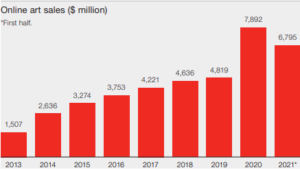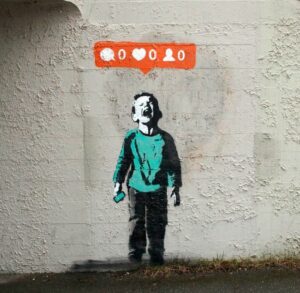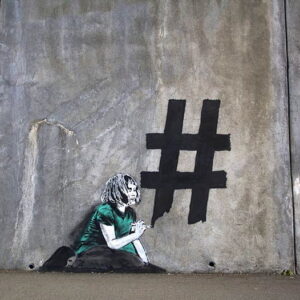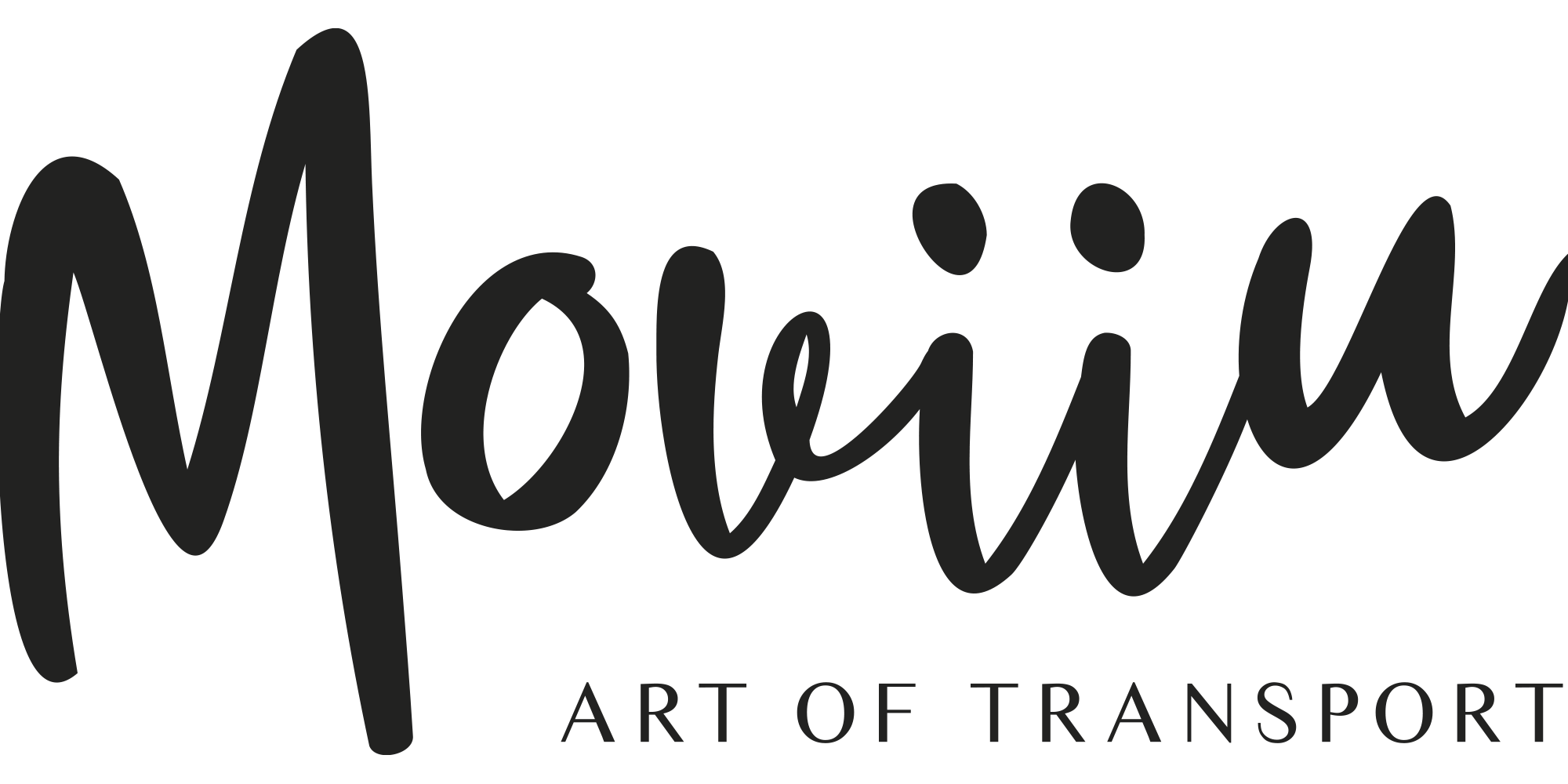How have online art sales fared since the start of the pandemic?
Covid saw the art market completely overhaul how it presented itself and traded.
Pre-pandemic, the art industry was mainly in-person with buyers and sellers meeting up to discuss art at galleries and international fairs. Industry figures had to review their methods to adapt to how Covid changed the world from physical to digital.
The changes industry figures made saw online sales soar to twice that of 2019, totalling 12.4 billion dollars. Online purchases accounted for a quarter of the market’s total value in 2020.
The art market was “forced” to go digital. Several galleries had to set up websites with virtual showrooms to display the pieces and enable customers to buy online.
 Sources : hiscox.fr
Sources : hiscox.fr
Online shopping meant a more modern and simple approach to using the internet, intensified by the series of lockdowns around the world. Online art sales in 2020 grew by 22% compared to just 7% a year pre-Covid, then soared to 29% in 2021 according to marketsize. A clear demonstration of the enthusiasm among art enthusiasts and interest among new generations in a market with new buyers aged under 35 on the rise.
Millennials have actually spent $5000 of their annual budget on the art market since 2018 (according to latribune.fr).). The Americans and British account for most of the new fans. The main idea behind e-commerce is to make art more approachable. The new sales channel puts the spotlight on little-known artists because of its wider demand and more extensive range. The new sales channel puts the spotlight on little-known artists because of its wider demand and more extensive range. They have a showcase for their work and their diversity is fantastic for providing a wide range of genres i.e. paintings and photographs as well as watercolours and lithographs that were harder to get hold of before. E-commerce covers every base and takes out the middleman with prices that are more affordable than the physical market (which used to be just for the elite). ). Being able to visit exhibitions from your sofa brings the market to a wider audience which makes it more popular and mainstream around the world.


The art market has social media to thank for the major role it has played in recent months. It has introduced the people of all ages to the art world and this progress means internet users can visit countless galleries, current exhibitions and upcoming fairs. Just take the Drouot auction house: It has an Instagram account where it shares the estimates and history of artworks with its followers. Social media has a massive influence on the work of artists, just look at how the Black Lives Matter movement took off and changed the world. Banksy comes to mind and how he reacts to the current climate, making the British artist a roaring success with a new audience.
Now we come to the crux of the matter: earlier we saw how industry figures are promoting/highlighting artists all over the world, but how do they make the switch from virtual to physical?
According to an online art trade report by Hiscox, 77% of buyers and sellers are 1000km away from each other. The industry’s sudden transformation may have reduced the digital distance between a seller or artist and a buyer but not the physical distance. According to a report by merketingdigital.comwhat sets industry figures apart are the services surrounding the sale: logistics, storage and transport. A simple and easy-to-use tool, an instant quote for packing and shipping a piece from A to B are assets that encourage prospects to make a purchase.
Last but not least, Covid completely transformed the art market by making it go digital. The shake-up brought the art trade to a new, wider and more diverse audience. Access to artists and artworks brought with it new logistical challenges for the figures involved in the art trade such as art shipping services. Fortunately, the art boom and trading are a mere formality with new platforms such as Moviiu which aim to be simple, fast, affordable and secure.
